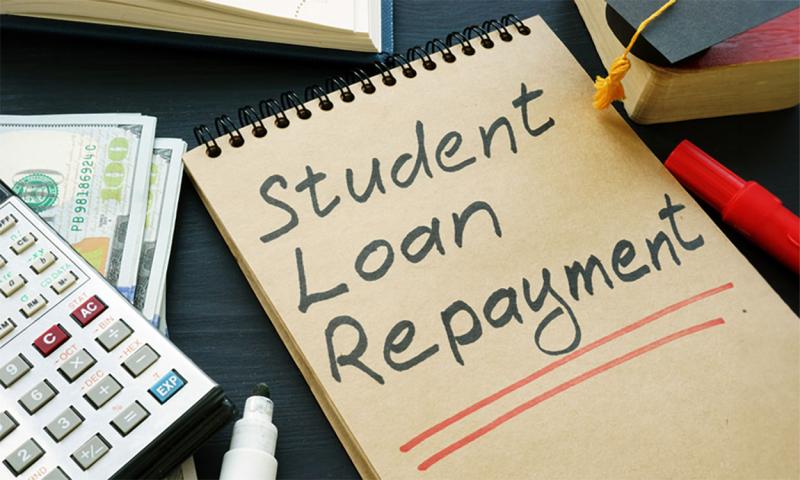
Written by Katie Minder under the direction and review of Lorna Saboe-Wounded Head.
Student loans are often considered an investment in your future. A post-secondary degree results in increased earning potential throughout the lifetime. Many people can be intimidated by student loans and the repayment process. Start by being smart about the amount of student loans borrowed to complete the educational degree. Keep records of the amount borrowed, interest rates, grace period, and lender information.
Types of Student Loans
Private Loans
- Private loans are borrowed from banks and credit unions.
- Credit unions typically have lower interest rates than banks or other institutes if you choose to take out a private loan.
- The repayment terms of private loans will depend on the financial institution from which the money was borrowed.
Federal Loans

Federal loans are loans funded by the federal government (U.S. Department of Education). Federal loans are known to have more benefits than private loans regarding repayment options and level of interest. The U.S. Department of Education offers the following types of loans:
- Direct Subsidized Loans: The U.S. Department of Education pays interest while the borrower is in school.
- Direct Unsubsidized Loans: Interest begins to accrue when the loan is disbursed, usually at the beginning of the semester.
- Direct PLUS Loan: This is a loan to parents of students who are in school. The funds need to be used for school expenses.
- Direct Consolidation Loans: Combining federal student loans into one loan.
Repayment Plans
- Traditional Payment Plan: This plan has a fixed monthly payment for 10 years (120 payments). This is the plan borrowers are automatically placed in. The monthly payments are the highest compared to other plans, but the least amount of interest will be paid.
- ICR (Income-Contingent Repayment): The payment is based on your income and family size and is either the lesser of 20% of your discretionary income or what you would pay on a repayment plan with a fixed payment over 12 years.
- PAYE (Pay As You Earn): This plan is like the SAVE plan. The difference is that, as your income increases, your payment will increase. Although your payments never go higher than what you would pay with the traditional plan.
- SAVE (Saving on A Valuable Education): Income and family size are used to determine monthly payments, which will be 10% of discretionary income. If you make monthly payments, your loan balance will not grow because of unpaid interest. The remaining balance of the loan is forgiven after 20 years if payment terms have been followed.
*For income-driven repayment plans (SAVE, PAYE, ICR), borrowers must annually update their information so the loan servicer can recalculate the payment amount if income and family size change.
Servicers

Student loan servicers are assigned to borrowers for federal loans. The servicers manage the payments of the loan. The loans are still held by the U.S. Department of Education. When you are paying your student loans, you make the payment to the servicer. Examples are Aidvantage, EdFinancial Services, MOHELA, and Nelnet. You should receive an email stating who your student loan servicer is. If not, log into your federal student aid account to find out.
It is important to remember there is a grace period of six to nine months after graduating before you must start repaying your loan. This allows you time to save money and plan your budget before it comes time to make the payments. There are loan forgiveness programs for individuals working in public service, as teachers, and as nurses. Review your eligibility and the requirements on the Federal Student Aid website.
Scams
Beware of scams! If you are asked to pay a fee for consolidation or to set up a repayment plan, it is a scam. No one will call you offering a loan. If they do, you should know it is not credible. Keep an eye on your credit report to make sure you are only paying loans that are yours.
A tip for paying off your student loans is to assess your financial situation. Look at your income and expenses and see what cuts you can make to save money. Use this extra money to pay for your loans. You also must understand your debt picture so you can plan to pay it off. Another tip is to talk to your loan servicer to learn the details of your plan and what other options are out there. Be sure to pay attention to their emails or mail for essential information. For more information on student loans please, visit the Federal Student Aid website.
Reference
Federal Student Aid, U.S. Department of Education
This content was presented as a webinar for the Financial Fireside Chats on May 28, 2024.


